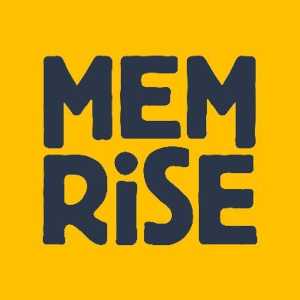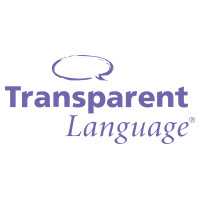10 Best And Worst Online Thai Courses For 2023
 Written byJohann Brennan
Written byJohann Brennan- Read time9 mins
- Comments0

Looking for the best online Thai course to learn the language?
Thai is rising in popularity, as more and more course options are being released.
In addition to tourism and foreign language careers, the benefits of speaking Thai cannot be overstated.
Today I’ll give you my rundown of the best (and worst) online Thai courses.
Below you’ll find pros and cons for each Thai course, pricing and a summary. Where applicable, I’ll link to a review of the course.
Table Of Contents
IMPORTANT: Some of the items listed below are probably only loosely defined as “courses” for Thai. The reason I’ve included them is that they’re popular enough Thai tools and therefore should be included.
DISCLAIMER: The comments below are personal opinions and some affiliate links are used.
The best Thai courses online (most popular Thai resources)
1. ThaiPod101

Cost: Starts as low as $4 a month.
Summary: ThaiPod101 is a brilliant online resource for learning Thai (especially listening comprehension). If you’re into podcast learning especially, this might be the course for you.
ThaiPod101 uses audio lessons similar to podcasts. Lessons are suitable for beginners through more advanced levels. The instruction not only includes listening skills but also incorporates essential vocabulary and grammar with loads of other useful features.
What I like:
- Large and always expanding variety of Thai lesson material
- Clean lesson interface and downloadable content
What I don’t like:
- Content choices are sparse beyond the beginner level
- Too much English banter
- While the lesson interface is nice, the rest of the site is overwhelming and confusing to navigate
UNIQUE OFFER: Use the code MEZZOGUILD to save 25% on any of their Thai course options.
2. italki

Cost: Prices vary widely
Summary: italki connects learners with tutors, teachers and conversation partners. As with similar services, it doesn’t a curriculum or content to instructors - just facilitates.
The good thing about italki is their vetted onboarding process for teachers which ensures quality. italki has earned its amazing reputation.
Teachers succeed on italki through client feedback, meaning subpar teachers simply will not cut it on the platform.
What I like:
- Facilitates great connections with expert teachers.
What I don’t like:
- No set curriculum means you could be paired with an inexperienced new teacher not yet weeded out by italki’s review system.
3. Memrise

Cost: Free
Summary: Memrise moved its free “community” courses to a site called Memrise a while back, while it continues to run a premium subscription on the original Memrise site.
From what I see, Memrise is identical to what Memrise use to offer.
Memrise are 100% free community-added courses (Thai and others) in the form of a gamified flashcard deck. You select a language or dialect, then go through a flashcard game of “watering plants”. It’s highly addictive and actually quite effective.
Some courses are excellent but not all courses are good. Look for ones that include audio and ones that teach phrases rather than single words.
See my video on downloading Memrise to Anki.
What I like:
- It’s an effective memorization tool for phrases and words.
- The addictive nature of the game gets you coming back often to continue learning.
- It’s all free.
- There are loads of community-driven courses to choose from.
What I don’t like:
- As it’s community-driven, you can’t always guarantee quality.
4. Assimil

Cost: Prices vary widely
Summary: The Assimil method is old and outdated, and its ‘two wave’ approach has little value in light of current Second Language Acquisition trends (although its focus on patterns rather than grammar drills is ahead of its time). The Assimil dialogues are extremely useful, however.
What I like:
- High quality dialogues
- Perfectly arranged audio library
- Very comprehensive
What I don’t like:
- Translation-based
- Only available in French
- Doesn’t appear to be backed by research or case studies
- Unusual and bizarre situational topics
5. Mondly Thai

Cost: Starts at $9.99/month.
Summary: Mondly offers courses for loads of different languages including Thai and is similar in style to Duolingo and Babbel. There are even hints of Rosetta Stone in its delivery.
It’s a beautifully-designed web app and a pleasure to navigate the Thai course content.
Some of the language courses aren’t that great (e.g. Arabic) but Thai and others are done fairly well.
What I like:
- Beautifully designed app and web interface makes it a pleasure to use
- Clear and easy progression through the Thai lessons
- Inexpensive
What I don’t like:
- Linear learning path
- Fairly repetitive and monotonous
See this Mondly review to learn more.
6. uTalk

Cost: $4.99 monthly per language, $9.99 for all 140 languages, $99.99 for a lifetime subscription
Summary: uTalk is essentially a fancy flashcard app, an alternative to Memrise and a great way to learn words and phrases in hundreds of different languages.
There are thousands of potential language pair combinations and tons of native speaker audio recordings with picture associations.
What I like:
- Authentic native speaker audio
- Hundreds of available languages
- Thousands of potential language combinations
- Easily affordable
What I don’t like:
- Sloppy UI
- Games are mediocre
- Broad approach that isn’t tailored for specific languages
7. Glossika Thai

Cost: $30 a month.
Summary: I’m a huge fan of the Glossika series.
Glossika is one of the most unique language products available and, in my opinion, one of the very few that uses a natural, research-grounded method. In fact, the Glossika method aligns very closely with how I personally learned Thai and I’ve seen tremendous success doing it.
Glossika focuses on high repetition of lexical chunks – in other words, listening over and over to a sequence of sentences at natural speed and repeating them.
It is hands down the most effective trainer for Thai listening comprehension and requires little else but frequent, daily listening/repeating to audio.
See this massive Glossika review and interview I put together.
What I like:
- One of the most truly unique and effective methods available, in my opinion.
- I personally had tremendous success using Glossika for Thai (and Russian).
- Focuses on heavy repetition of natural language chunks.
What I don’t like:
- Difficult concept to grasp for new learners of Thai.
- Natural approach requiring heavy repetition may feel tedious to some people.
- Slightly higher priced monthly subscription.
8. Mango Languages

Cost: $7.99 a month
Summary: Mango Languages has implemented what I believe to be one of the best ‘chunking’ approaches in its course style I’ve ever seen (very close to my own successful method). It does this by avoiding grammar Thai explanations and instead highlighting lexical chunks in colors to help you learn language patterns.
One of the best features I’ve seen in a language product. Period.
The only problem with Mango is that it’s quite lightweight on its course depth. If they developed an advanced course for Thai, I’d be a raging fan.
What I like:
- Beautifully designed Thai course
- Focuses on lexical chunks (color coded) rather than rules which is how I prefer to learn
What I don’t like:
- Minimal grammar focus
- Lack of content depth for higher-level learners
9. Transparent Language

Cost: Pricing varies
Summary: Transparent is one of the most surprising online Thai courses I’ve tried.
The system and interface are antiquated and slow which is a real drawback, but if you can look past it, Transparent Language provides a real depth of Thai course content.
The voice recognition comparison is non-existent in Transparent Language. It relies on recording on your voice and showing you your sound wave to compare with the native speaker’s sound wave.
No inbuilt system to automatically compare sounds.
The Transparent Language course has a “Produce it. Say it.” section that literally asks you “Were you right?”.
In other words, no way to automatically detect whether you were correct or not – it relies on your own determination. This is incredibly outdated.
Overall, if you can look past the outdated design and deficient voice recording aspect, Transparent Language Thai is an outstanding course option.
What I like:
- Thai dialogue is 100% natural speed
- Extensive coverage and depth of content
What I don’t like:
- Outdated and slow interface that’s a pain to navigate
- Pronunciation section has no inbuilt voice recognition to compare to native dialogue
10. Pimsleur Thai

Cost: $14.95 a month subscription (or $119.95 per level)
Summary: Pimsleur’s a household name for learning Thai using spaced repetition recall. The lessons focus on practical vocabulary and expressions one might need in various scenarios. This includes greetings, common phrases, and vocabulary you might need when talking to native speakers.
In terms of just how much you get out of it, I’d say Pimsleur is a good entry point for Thai but it will only familiarize you with the basics. Treat its Thai course as a foundational course and then move on to something more comprehensive.
Pimsleur does not offer any video or written content. It’s audio only.
Read this Pimsleur review.
What I like:
- Pimsleur was based on solid research in second language acquisition.
- Extremely effective method despite its age.
- Heavy repetition of Thai language samples.
What I don’t like:
- Outdated scenario examples.
- Too much English.
Summary: Best online Thai courses
This pretty much sums up every online Thai course option currently available (if I missed a good Thai course, let me know!).
In addition to a Thai course, make sure you’re getting regular Thai practice with native speakers which is vital if you want to learn Thai properly.
For that, italki is the easiest way to find really inexpensive practice partners and tutors.
Just remember that even if you have all the courses on this list, you’ll still fail at Thai without the right motivation, and even a poor Thai course can be effective in the hands of someone with the right amount of determination to succeed.
For tips on how to learn Thai and overcoming various language learning struggles, subscribe below by ‘Joining the Guild’ (select Thai as your target language).
Know of a Thai course that I didn’t mention?
Share it below in the comment section.
 Grab the link to this article
Grab the link to this article